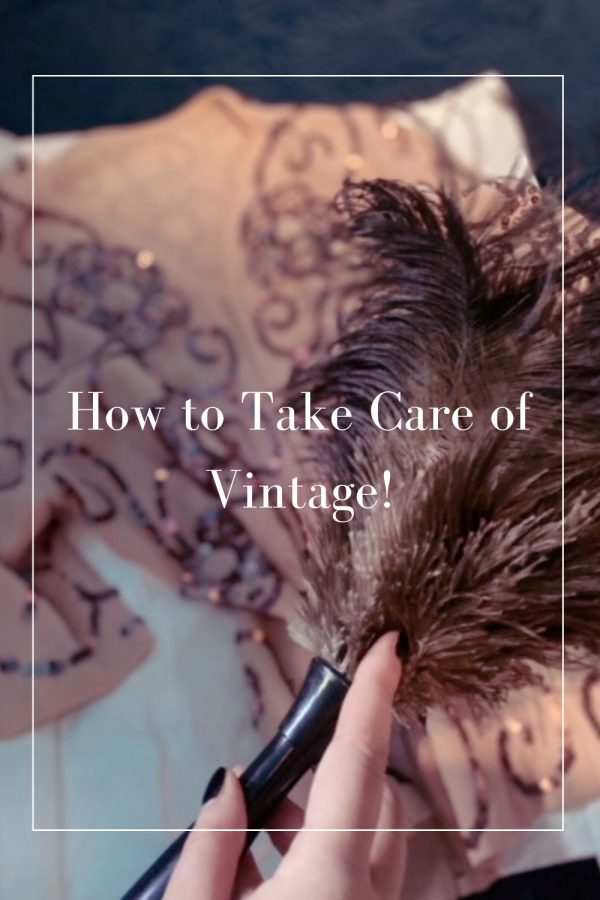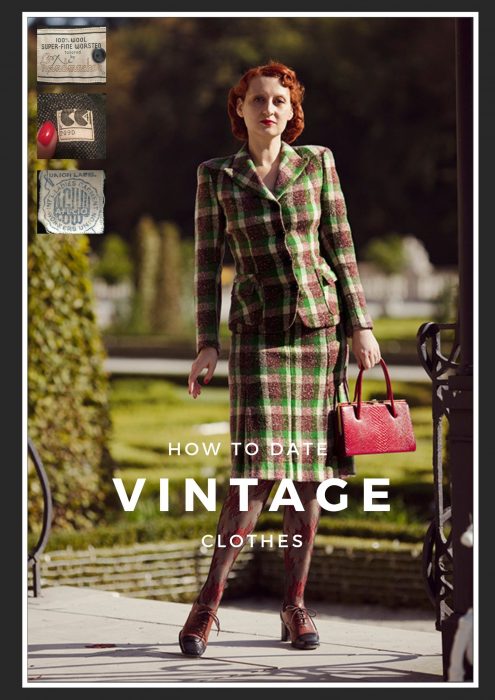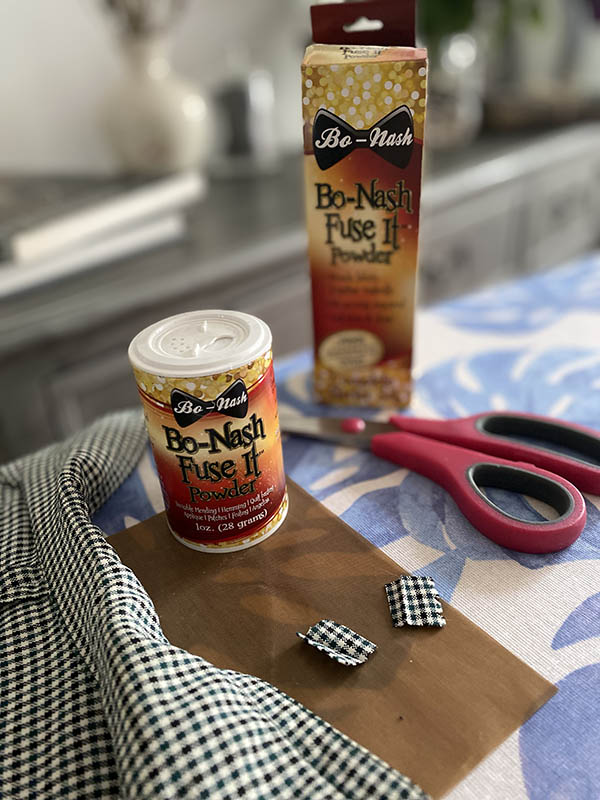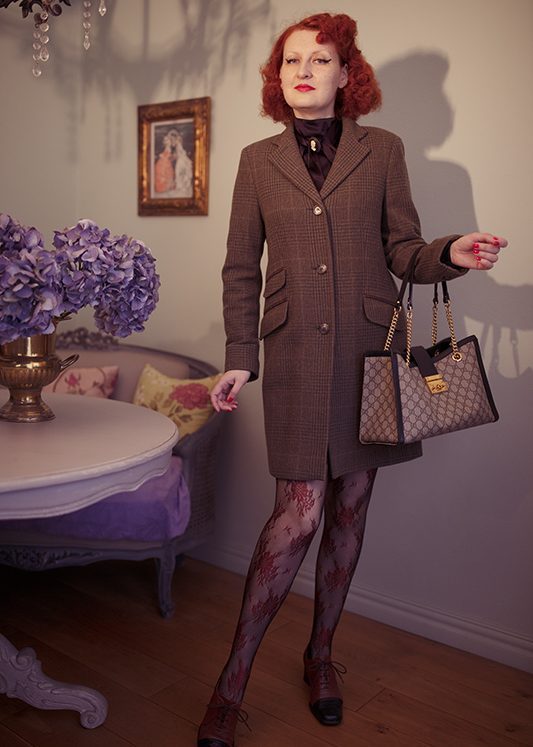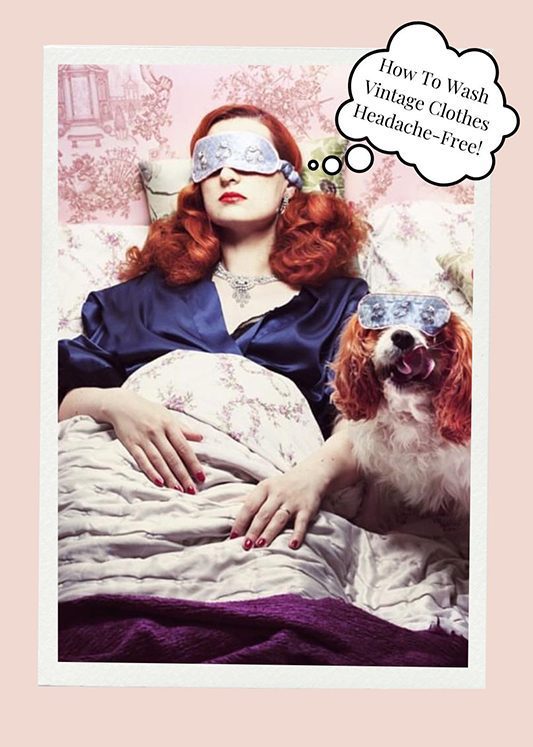Why Are Vintage Clothes Expensive
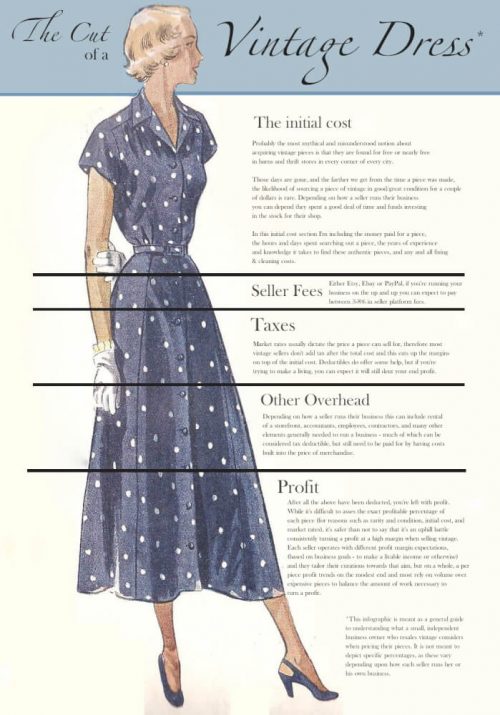
Last updated on May 6th, 2024 at 08:42 am
- “Why are Vintage Clothes Expensive?”
- The Value of Vintage Clothing: Demystifying Modern Cost of Vintage!
- My Vintage Wardrobe
- Quality First
- Difference Between Vintage & Modern Fashion
- The Value of Vintage Clothing: Demystifying Modern Cost of Vintage!
- Trends Borrow from Vintage Fashion
- The Price of Vintage Clothes
- Quality Over Quantity When Buying Vintage Clothes
- You are Paying for the Expertise & That’s Priceless
- The Love For Vintage Makes the Clothes Expensive
- The Myth of Cheap Vintage
- The American Pickers
- Why are Vintage Clothes Expensive?
- Here is Where You Have Two Very Different Types of Vintage Sellers.
- Learn How to Clean Vintage Clothes!
- Photography is Expensive!
- The Vintage Buyer
- Are You Ready to Shop for Vintage Clothes?
I understand your curiosity about the high cost of vintage clothing. As someone passionate about vintage fashion, I constantly search for the perfect 1930s gown, yet another CC41 1940s skirt suit, or a 1950s bolero. However, I have learned that finding these rare gems at a bargain price is nearly impossible.
Over the past 20-plus years, I have come to appreciate the true value of vintage clothes. Each piece has a unique story that makes it invaluable. Vintage clothes are not just garments; they are a piece of fashion history.
WHY ARE VINTAGE CLOTHES EXPENSIVE?
Vintage clothes are a testament to the creativity and craftsmanship of a bygone era. When you buy a vintage garment, you are not just buying a dress or a coat; you are buying a piece of art. Each piece has its personality, its style, and its history.
Vintage clothes are a testament to the fashion trends of the past, and they can be worn in many different ways to create a unique and individual look. Moreover, vintage clothes are made with high-quality materials and superior craftsmanship which is hard to find in today’s fast fashion industry.
These clothes were made to last, and many vintage pieces are still in excellent condition today. The rareness of these garments also adds to their value, as they are not easily replicated or mass-produced.
So, it is not surprising that vintage clothing is expensive. You are not just paying for the garment itself, but for the history and craftsmanship that it represents.
If you are a vintage shopper, you know that the hunt for the perfect vintage piece is part of the thrill. Each garment is a treasure waiting to be discovered and appreciated, and the high cost is just a small price to pay for a piece of fashion history.
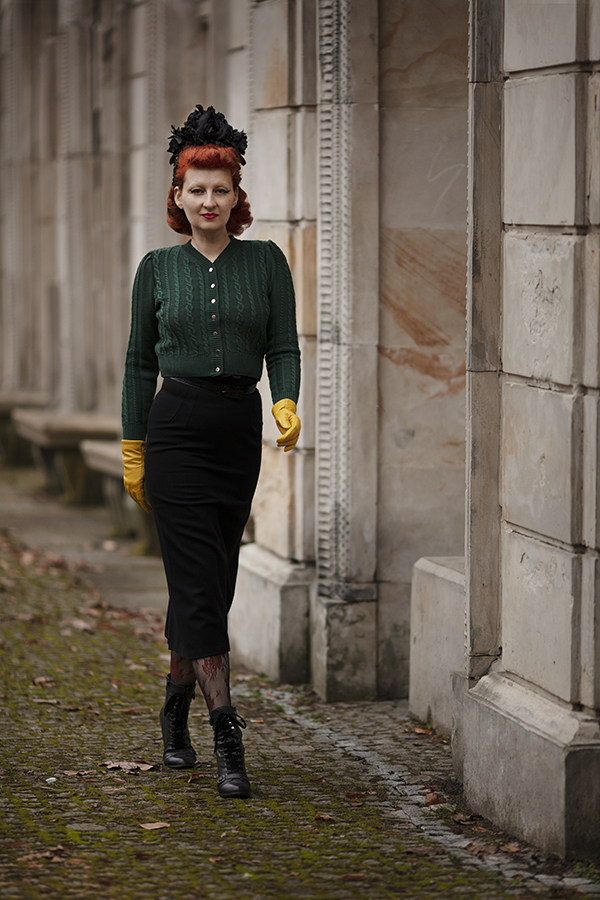
VINTAGE BARGAIN HUNTER
I found this stunning 1950s skirt in mint condition for £48!
To this end, I can say, with a fair degree of certainty, if a vintage piece, be it on Etsy, IG or bricks and mortar is fairly priced, a real bargain or ridiculously overpriced. And it’s at this more costly end of the price range that often brings people to me asking
“Why are Vintage Clothes Expensive?”
With this question repeatedly coming up, I can see that this topic needs further exploration.
And so I’ve asked one of my favourite sellers, Lauren of Sultry Vintage to help demystify the modern cost of vintage fashion!

The Value of Vintage Clothing: Demystifying Modern Cost of Vintage!
Info-graph and article were written for the It’s Beyond My Control blog by Lauren of Sultry Vintage shop.
It wasn’t my grandma that said it, but a close friend
I can’t afford to be cheap.
Those words have shaped how I’ve lived my life since the moment I became responsible as a consumer. Being a consumer isn’t something one should take lightly – though with modern advertising the push seems to be – don’t think, just buy, because we say so! I fall into the category of overthinking and never compromising.

My Vintage Wardrobe
This is the reason my wardrobe is full of vintage clothing. Today our sense of history seems to be foggy at best, considering all that’s going on in the world, and I have to agree with all the grand old women of previous years.
Quality First
Clothing is a necessity. We need it not only to protect ourselves from the elements but we’ve adapted it to complement and represent who we are as creative, expressive beings.
Your clothes say something about you, whether you like it or agree with that statement or not, and today’s fast fashion comes with a horribly depressing message – everything is disposable, the planet doesn’t matter, and questionable labour practices are acceptable.
I’m not trying to gloss over the past and say that everything was always copacetic in the ways we produced goods, but there are some glaring differences between vintage and modern fashion.
Difference Between Vintage & Modern Fashion
The most obvious is quality. Go ahead and try to find a dress thoughtfully cut to the shape of a woman’s body and in a luxurious material like silk, satin, or rayon. Forget even the luxurious fabrics, how about delicate, natural cotton with handmade lace accents or hand-carved buttons.
You won’t find it in a fast fashion store, probably not even in a higher-end boutique these days. Your only option would be couture.
Growing up my mother owned her own seamstress business. As a kid, I remember carefully coiffed women streaming in and out of my house, the scent of their perfume, and stacks of clothing my mom would tailor to fit or finish in ways that the garment manufacturers hadn’t.
These women cared about their clothing and constantly lamented the drop in quality clothing from when they were young (we’re talking the 40s, and 50s), which echoes my mom’s current complaints when we talk about clothing “it’s shameful what these companies put out. If you look inside at the seams they’re a disgrace!”

With modern fast fashion, you’re paying hard-fought money for poorly made, ill-fitting clothing made from awful materials.
Is it any wonder vintage has become so popular?
For the same cost as a modern dress, you can find a beautifully cut vintage dress of far superior quality.
The Value of Vintage Clothing: Demystifying Modern Cost of Vintage!
Now. When talking price and value of vintage fashion we’re comparing two different yet interlinked ideas.
- The value of vintage fashion can’t be denied. The quality is better, the materials finer (I dare you to try and even find a few yards of rayon fabric to compare to those of the 40s to even put in the labour to sew your dress – you’ll probably pay more than a vintage 40s dress already available), and the environmental benefit of choosing to buy vintage will send your karma points sky high. So how is this even a choice between fast fashion and vintage?

Trends Borrow from Vintage Fashion
If you want to remark on trendiness or styles, I have some terrible news for you – all, if not most – of current fashions borrow heavily from silhouettes of decades gone by. This is just the way it goes.
- So you’re already wearing vintage styles (hello, the 90s are in more than ever today in the 2010s, in the 50s it was the Edwardian era with Teddy Girls and Teddy Boys, the 70s took on the Edwardian era as well as deco / the glam 20s.
- And in the 60s the psychedelic movement looked towards Art Nouveau aesthetics of the turn of the century, albeit with much wilder colours), why not put your money to work for you and buy garments that will not only last for another 100 years but are more luxurious than almost anything you’re buying now – guaranteed (this said, we’ll get into quality modern in a bit, stick with me).
The Price of Vintage Clothes
Now to the issue of price. Here I can offer a unique perspective because my closet isn’t only filled with vintage clothing, I sell vintage clothing.
This, I don’t believe, makes my opinion biased because I don’t sell vintage clothes to make a living (that’s a discussion for a whole other day, however), I do it because I’m a complete history nerd and I demand quality. We all should. If I wasn’t selling vintage I would still be buying it, I’m a collector first and foremost, and steward of history who cares about preserving the items that tell the story of how we used to give a damn about fashion as an art and the quality lacking in today’s fashion.
As a seller I often hear people baulk at the price of vintage, here I’d like to help clarify some of the reasons vintage carries the price tag that it does.
First, starting the long journey of vintage to your closet, consider where most vintage clothing lives – I’m talking at its absolute source: trunks in attics, closets of original owners who haven’t taken it out in decades. In the interim years since these clothes were worn, and considering storage conditions, only a fraction of these clothes make it out of those trunks and closets having escaped all environmental conditions bent on destroying them.
When these pieces are set free from decades-long confinement they filter out into the world through a variety of avenues, and in varying states of wearability. Here is not even where the vintage sellers’ job begins. It starts while these clothes are still living their life in the dark.
Quality Over Quantity When Buying Vintage Clothes

Any good vintage seller worth their salt needs to acquire knowledge, a knowledge of clothing spanning nearly one hundred years – as often sellers source clothes from the late Victorian (Regency, even, if we’re extremely lucky!!) up to about the 70s.
That is a lot of understanding about cut, construction, materials, finishings and notions not to mention major fashion movements – and on a global scale. The world wears clothes, not only the Western world.
Image courtesy of Mary Evans Picture Library, @Mary Evans Picture Library. You can find this and many other wonderful vintage pictures at www.maryevans.com
Vintage sellers need this knowledge because it helps us identify vintage while sifting through – literally thousands – of garments in the places we hunt out vintage. It needs to become an innate knowledge because our time is valuable and the hunt can be exhausting. Often our hand will touch a piece of fabric and we’ll instantly know what it is, or our eye will catch the cut of a sleeve and we’ll figure out an era.
You are Paying for the Expertise & That’s Priceless
This level of expertise is something that in other fields of knowledge is highly valued, as it should also be when sourcing quality, vintage garments.
- So now the vintage seller has taken years to hone their knowledge and the clothing have escaped into the world. Where to find it all? Some areas of the country (and globe) are rifer with vintage than others, and the farther away from a year we get, say, 1935, the less of a chance clothing from that year will be found in good condition. I’ve spent days to weeks chasing leads to figure out where this vintage clothing can be found, and even then it’s no guarantee that when I arrive it will be in any kind of good condition.
- It will never, and I mean never, cease to shock me when I find a 90-year-old piece of clothing in phenomenal condition. It actually makes me think twice about all I know because it’s such an insane miracle that a silk dress, hand-beaded, so delicate you can see through it in the right light, can have made it all this time without so much as a single tear or stain.
The Love For Vintage Makes the Clothes Expensive
In these instances you know someone cared very deeply for this article of clothing and stored it properly, understanding its value. So here is where the real work sets in.
Finding the pieces and then sifting through all of the heartbreakers that are too far gone to be rescued and picking out the few shining examples you can repair, send out for repair or cleaning, and eventually bring out to be sold.

The Myth of Cheap Vintage
- The biggest myth I hear from people who collect vintage is that we as sellers find dresses from the 1920s for $2 at thrift shops. No. That might happen once, or twice in a lifetime (and if more frequently you’ve found mecca, never leave!). And just because it happened to you while thrifting once doesn’t mean that we as sellers who spend a large portion of our time dedicated to this quest have that happen with any amount of regularity.
- The reality is a stark contrast. I’ve often found pieces that are heavily damaged but because people who don’t deal in vintage often and rarely see older clothes think it’s so rare that even if it’s damaged beyond saving, they’ll put an insanely high price tag on it.
- This mind-boggling situation happens fairly often as the big struggle is educating sellers (yes, we as vintage shop owners buy from other sellers most often – either the families of original owners of these clothes or estate sale professionals) about what they have and how much we can realistically pay for it as we have overhead.
The American Pickers
- My best advice for understanding this conundrum would be to watch the show American Pickers. They often have to explain to collectors/origin sellers why they can’t pay the retail cost, but they’re there with cash to pay a fair price so they can take it off the origin seller’s hands and they (the origin sellers) don’t have to do the work to find the audience to sell their piece – we as vintage shop owners have spent a large amount of our time already doing that. Which is another aspect of what goes into the price of a vintage piece.

Why are Vintage Clothes Expensive?
So let’s recap. So far we have vintage sellers educating themselves for years so they can bring you authentic, quality pieces, they then have to spend a lot of time searching out these pieces, and then they have to get them in good condition for a reasonable price because there’s much more work ahead.
This is the break between what I would call the first half and the second half of what goes into vintage selling. Right now is the excitement and relief of having found quality, gorgeous, unique vintage clothing! I try to bask in this feeling for as long as possible because I know the work ahead of me is exhausting.
Here is Where You Have Two Very Different Types of Vintage Sellers.
- Those who find these pieces and sell them as-is for a lower price, but it will be on the buyer to do and work required to bring the garment up to tip-top shape most often.
2. And the sellers who then take these garments, heavily assess them for damages and wearability, and then invest more work to clean and repair them. As with everything you as the buyer need to choose what you can and want to pay for vintage. If you have no time to fix pieces or have expensive taste, you’re going to pay for someone else to do that work for you.
Any vintage seller will tell you that the mending and the washing (oh! the endless and terrifying washing!) is the most stressful part of this job. Here is also where that knowledge comes back in. When caring for vintage garments as it concerns cleaning, there are no cleaning guidelines in tags for clothing pre-1960.
That ‘dry clean only’ and material contents tag only became a thing after the midcentury and so knowledge of fabrics is deeply important for sellers who take the time to present clean, repaired vintage clothing.
It’s a science blended with a whole lot of leaps of faith. So, if a seller then runs that gauntlet and can find and clean/repair the clothing it then comes down to photography, listing, and finding the audience interested in vintage clothing.
Photography is Expensive!
To be short, photography can be expensive and a challenge in its own right as product photography is important and post-production editing is time-consuming.
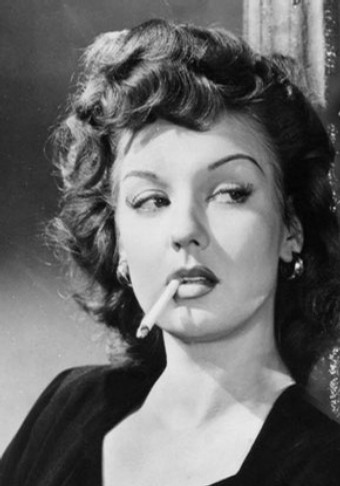
The Vintage Buyer
As far as audience goes, there used to be a wonderful, diplomatic platform where people had a choice and you could find others based on common interests and follow their page (*cough*Instagram*cough*) which is now dead – for all intents and purposes – making getting the word out about these unearthed gems even more taxing on a sellers time.
All of this and more (for the sake of time I’m leaving out business fees, taxes, overhead, etc that go along with owning any business) goes into those numbers you see attached to a vintage garment in the form of a price tag.
In those numbers is a ton of hard work, knowledge, expertise, market rates consideration, and passion bordering on obsession. If we didn’t care that vintage clothing was a better quality than what is on offer today, I don’t believe it would be half as popular as it is now.
It would still be popular, no doubt, for the history lovers among us, but vintage clothing sets itself apart because it’s not only timeless in the ways you can update it by pairing it with thoughtfully selected modern clothing but because we can’t afford to be cheap.
Being cheap, in the long run, costs us more – more environmentally, more of the money we work so hard for, and it costs us the experience of the luxury we all deserve, for working so hard, that these clothes offer by way of their beautifully constructed silhouettes and quality materials.
Are You Ready to Shop for Vintage Clothes?
If the answer is yes, you should definitely read the following articles!
DISCLOSURE: I’m part of an affiliate program, and I get a small commission for purchases made through the Shop My Favourites links in this post. That’s how I keep my website alive, for which I’m very grateful to you. Shopping via my affiliate links comes at no additional cost to you. All opinions expressed here are mine!
Shop My Favourites!
